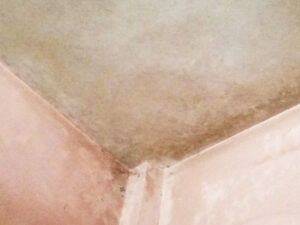Although cleaning dark walls is not an easy task, a streak-free finish can be achieved with the right tools and methods. I am personally aware of the annoyance that comes with discovering streaks on clean surfaces, but through time, I have developed a method that allows me to leave no streaks behind after each cleaning session of dark walls in my own house or place of employment. Here, I share my knowledge by providing detailed advice on how to complete without streaks, whether you’re working at home or in an office. Let’s start cleaning now!
Method 1: Dry Cleaning
Dry cleaning is the first stage in removing dust and other loose particles that have accumulated on dark walls. Dark walls are susceptible to dust accumulation, which makes them appear soiled and boring. Using a soft-bristled brush or microfiber cloth to remove dust is an efficient method. Either choice should work well for this task; simply softly sweep from top to bottom while also wiping in a circular motion to remove dust particles as you go.
Method 2: Wet Cleaning
After completely dry washing the walls, it’s time for step two, wet cleaning. This entails thoroughly removing dirt, filth, or stains from walls using water and cleaning agents; by utilizing the right methods, streaking can also be avoided.
How to Choose the Best Cleaning Products
When choosing the right cleaning supplies for cleaning dark walls, special care must be taken to avoid damaging paint or leaving streaks. There are several secure items made especially for dark walls:
Water: Water may be an efficient cleanser for light stains and blemishes to be removed fast and without leaving streaks behind when applied sparingly and carefully to dark walls. Its surfaces could develop streaks if used alone, though.
Vinegar: Vinegar is a powerful natural cleaner that works well on dark walls and won’t harm the paint. Mix equal parts vinegar and water in a spray bottle, spray onto dark walls, and then wipe with a microfiber cloth using circular motions.
Water and soap: Combine a few drops of mild soap and water in a spray bottle. Spray the mixture over dark walls, then wipe them with a microfiber cloth in a circular motion.
Commercial Cleaning chemicals: If you want to safely clean dark walls, you might be best off using commercial cleaning chemicals that have been designed for that purpose. Watch out for items made especially to deal with dark paint that doesn’t include harsh chemicals that can damage it.
Choose the Right Cleaning Tools
It is crucial to use adequate tools in addition to employing appropriate cleaning chemicals. On dark walls, improperly picked tools may leave streaks or damage the paint. For cleaning dark walls, try these efficient tools:
Microfiber Cloth: A microfiber cloth is an absorbent, soft cloth that may be used to clean walls without leaving any streaks. It should always be maintained clean and dry for optimum performance; using a moist microfiber towel could cause streaking problems.
Soft-Bristled Brush: Use a soft-bristled brush to gently scrape away any stains or blemishes on walls that are particularly difficult to remove. Choose a brush with soft bristles to avoid scratching paint.
Sponge: A sponge can be a useful cleaning tool for removing dirt and grime from walls and ceilings without leaving any stains. To prevent leaving streaks on your surfaces, only apply the cleaner with clean, moist sponges.
Steps to Cleaning Dark Walls Without Leaving Streaks

It’s time to start deep-cleaning your dark walls now that you have all of the supplies and equipment you need. Here are the steps to take for a simple outcome:
Protect your furniture
Protecting the floor and furnishings is vital before beginning wall cleaning. Move any furniture away from walls to avoid damage or water stains, and use a drop cloth or old sheet to catch any drips or splatters.
Test a Small Area
It is advisable to test the cleaning solution on a small area first before using it to clean the entire wall. This might help to ensure that it doesn’t harm the paint job or leave streaks behind. Choose a hidden spot behind furniture or in another area of the room where there may be less sunlight, apply the solution with a sponge, wait for it to dry for a few minutes, and then wipe the area with a dry microfiber cloth. If there are no visible streaks or paint damage, continue cleaning the rest of the walls.
Utilize the cleaning solution
It’s time to apply the cleaning solution after testing a tiny area. Use a safe solution designed for dark walls mixed with water in a spray bottle to apply it to the walls, working your way down from the top and being careful not to oversaturate the surface as this can lead to streaked walls.
Clean the Wall
After spraying the walls with cleaning solution, wipe them down in a circular motion with a microfiber cloth while regularly wiping them down with a fresh wring out to prevent streaks. Soft bristle brushes can help clean gently around any obstinate stains or blemishes on the wall that has persisted after being removed with your microfiber cloth.
Dry the wall
To avoid streaks, the walls must totally dry after you have finished washing them off. Circularly wipe the wall with a clean, dry microfiber towel; any moisture left behind will leave stains.
What type of cloth can I use to clean dark walls without leaving streaks behind?
When it comes to cleaning dark walls without leaving streaks behind, selecting an appropriate cloth is of utmost importance. A microfiber cloth is an excellent way of gently and efficiently removing dirt and grime without leaving behind streaks or lint. Made of small fibers designed to trap dirt and dust particles, microfiber cloths make ideal surface cleaners. Additionally, they’re machine-washable making them an eco-friendly option!
When using a microfiber cloth for cleaning purposes, it’s essential not to oversaturate it with cleaning solution; overdoing so can lead to streaks. Instead, lightly spray your cleaning solution onto the wall before wiping with an unblemished, dry microfiber cloth in a circular motion against its surface, be sure to wring it out regularly to avoid leaving streaks! With the right cloth and technique, you can achieve a professional, streak-free finish on dark walls in both home and workspace environments!
Should I use warm or cold water to clean dark walls?
When it comes to cleaning dark walls, water temperature plays an integral part in producing optimal results. Warm water works better at dissolving dirt and grime than cold water. However, hot water may damage certain paint or finishes. Before proceeding with cleaning it is wise to perform a test on an inconspicuous area first to test for potential damage.
If you prefer using room temperature water instead of warm, be wary about using cold water on dark walls. Colder waters may not be effective at dislodging dirt and grime from surfaces, leading to streaks or smudges on surfaces. Something which should be avoided at all costs when cleaning dark walls.
Ultimately, the right temperature of water depends on both the paint and finish on your walls as well as how much dirt and grime must be removed from them. If in doubt, test a small area first before making decisions on an entire room.
How can I remove scuff marks from dark walls without ruining their paintwork?
Scuff marks on dark walls can be unsightly, but they can be removed without damage to the paint with proper techniques. One effective way is using a pencil eraser. Just rub over each scuff mark in a circular motion until they fade away. Be sure to opt for white rather than colored erasers that may transfer their hue onto your wall surface!
As another option, use a magic eraser or sponge with a melamine foam side to gently rub over scuff marks until they start to disappear. Be wary of applying too much pressure as this could damage the paint finish.
If the scuff mark is particularly persistent, use a mixture of baking soda and water as a remedy. Mix equal parts baking soda and water into a paste form. Apply to the mark with a damp cloth until completely gone. Rinse out the area thoroughly afterwards with clean water before drying it thoroughly after the removal of mark.
Note that certain methods for removing scuff marks, such as using an abrasive cleaner or scraper, may damage the paint and should be avoided. Also, whenever testing out any new cleaning method on an inconspicuous area first before undertaking full coverage.
Prevention is key when it comes to maintaining dark walls without scuff marks and scratches, so consider adding chair rails or baseboards as protection from furniture and foot traffic, as well as felt pads under furniture legs to avoid scratching them against the walls. With proper precautionary and cleaning methods in place, your dark walls will stay looking pristine!
Are vinegar cleaning solutions effective in eliminating streaked walls on dark walls?
Yes, vinegar can be used to effectively and streak-free clean dark walls. Vinegar is an eco-friendly cleaning agent, suitable for many surfaces including walls. Its acidity helps break down dirt and grime quickly while providing an invisible finish with no visible streaks left behind.
To use vinegar for cleaning dark walls, mix equal parts white vinegar and water in a spray bottle and lightly apply. After spraying onto the wall, lightly spray its contents on using an appropriate amount. Use a microfiber cloth wrung out regularly to wipe down its surface in a circular motion. For stubborn stains or marks, you can directly apply the solution and gently scrub with it instead.
Important to remember when using vinegar is its strong scent, which may be unpleasant for some individuals. If this bothers you, add a few drops of essential oils such as lemon or lavender oil into the cleaning solution to mask its aroma. Also, keep in mind that acidic surfaces like marble or limestone cannot tolerate vinegar cleaning solutions as this could damage them over time.
Vinegar can be an economical and efficient solution to clean dark walls without leaving streaks behind. Following proper techniques and practicing patience, it can help create a streak-free finish on any dark walls in your home or workspace.
Are we safe in using bleach on dark walls to remove stains?
Bleach can be effective at eliminating wall stains, however, its use on dark walls should be avoided as bleach is a powerful chemical that may damage and discolor dark paint, leaving behind unsightly marks or even dissolving it entirely.
Luckily, if you need to remove stubborn stains from a dark wall there are alternative methods that are less abrasive on its paint surface. Baking soda mixed with water can be used as an antiseptic paste that can be applied directly onto stains before wiping clean with a damp cloth after several minutes of waiting. Or alternatively, a magic eraser or melamine foam sponge may be used gently scrub away the stain without damaging its surrounding paint layers.
Prevention is key when it comes to keeping walls spotless and stain-free, so add chair rails or baseboards as protection from furniture and foot traffic. Or place doormats at entranceways to your home or workspace in order to stop dirt from being tracked in and staining walls.
Overall, using bleach on dark walls to remove stains is not recommended as an effective means of removal. There are alternative approaches that are less harsh and won’t damage the paintwork. Prevention is key when it comes to keeping walls looking their best!
How can I avoid leaving streaked walls when cleaning with a mop or sponge?
Avoiding streaks when cleaning dark walls requires several key techniques that ensure all surfaces are thoroughly and uniformly cleansed. Here are some strategies to avoid them:
Make sure your tools are clean: Before beginning to clean, ensure that all of the tools you are using are free from debris and clean. Dirty mop heads or sponges may leave streaks or spread dirt around.
Use the appropriate amount of cleaning solution: An overabundance of cleaners can leave streaks, so be sure to follow instructions on product labels or dilute your solution for maximum effectiveness. Furthermore, do not saturate walls too heavily with water as this could also leave behind streaks and water damage on walls.
Work in sections: Divide the wall into manageable chunks, and work on one at a time to avoid streaks forming in your cleaning solution before it has had enough time to soak into the wall surface and be removed by wiping. This approach also helps ensure you use enough cleaning solutions as you work.
Use a back-and-forth motion: Instead of scrubbing in a circular fashion, wipe down walls with a back-and-forth movement to distribute the cleaning solution evenly, and avoid streaks forming on them. This method helps ensure streak-free walls.
Dry the wall thoroughly: Once you are finished cleaning a section of the wall, use a clean and dry microfiber cloth to ensure all areas have been dried off completely to help avoid streaks, and leave behind an attractive appearance on the wall. Doing this will prevent streaks while leaving behind an uninterrupted wall surface!
By following these techniques, you can effectively prevent streaking when cleaning dark walls with a mop or sponge. Remember to work in small sections at a time and always use clean tools with sufficient amounts of cleaning solution.
Conclusion
While tackling dark walls without leaving streaks is no easy task, it is undoubtedly doable with the right equipment and methods. Prior to beginning, dry cleaning the walls will remove any dust or loose debris. Choosing vinegar or mild soap and water cleaning solutions, as well as microfiber cloth or soft bristle brush cleaning tools is also important. By following the instructions in this article, which include testing small areas first, applying the solution in a circular motion, wiping with the microfiber cloth, and drying completely, you can achieve a streak-free finish.







